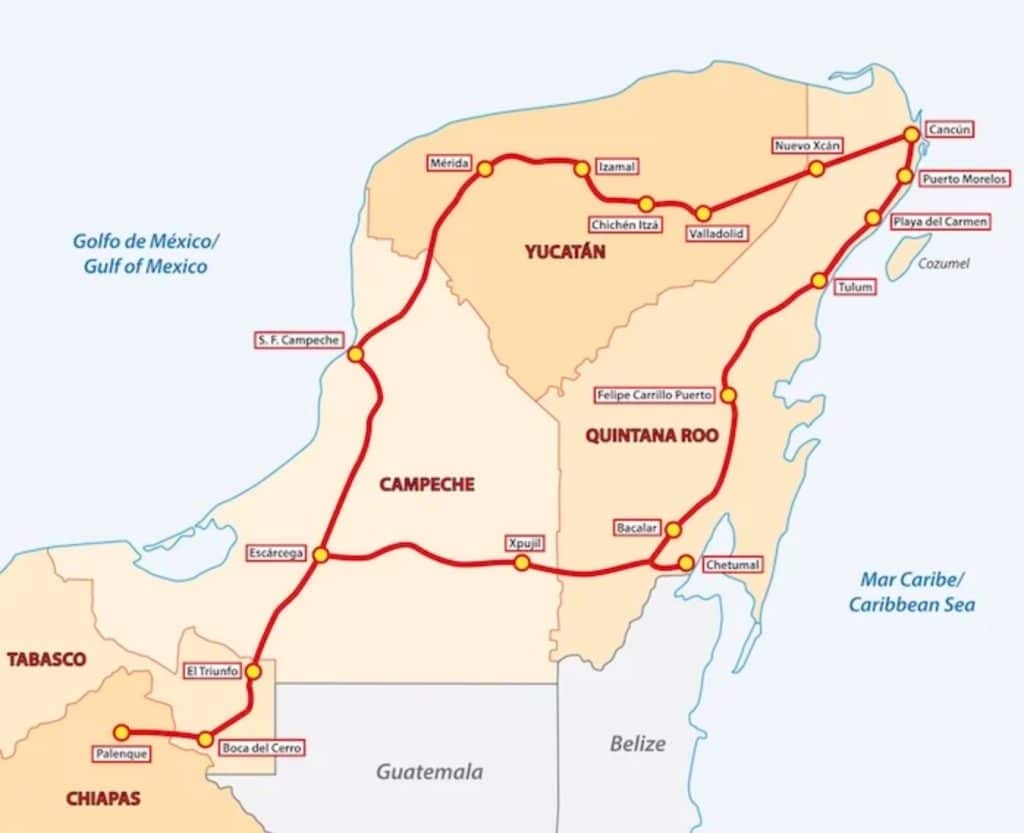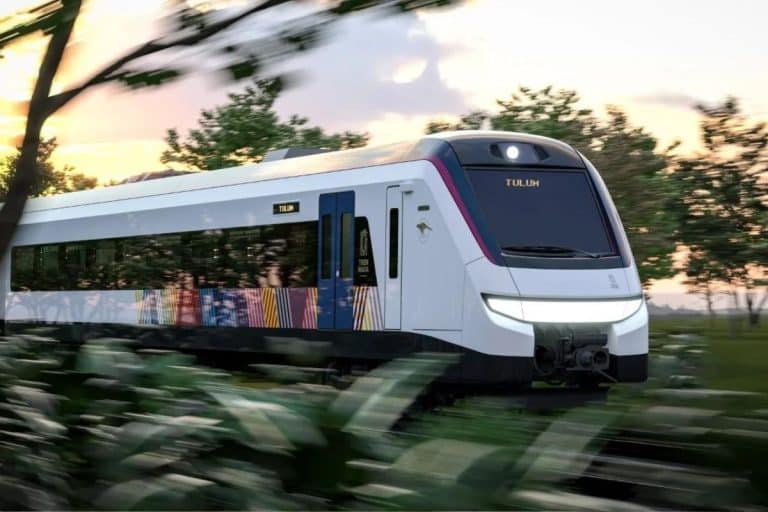The railway project will offer tourists a new route of 1,554 kilometers through five states in Mexico. There will be 20 Tren Maya stations and 14 bus stops along the five-state circuit.
The National Fund for the Promotion of Tourism (Fonatur) has announced that the state of Chiapas will have a sole train station, namely the Palenque station. For Tabasco, tourists will have the convenience of accessing the Boca del Cerro Station, linking with Chiapas, the Tenosique bus stop, and the El Triunfo Tren Maya Station, which connects with Campeche.

In Campeche, travelers will have the opportunity to connect with the neighboring states of Tabasco, Yucatán, and Quintana Roo. The region will be served by four Tren Maya Stations and seven bus stops. The Tabasco route, for instance, will involve a stop at Candelaria before proceeding to the Escárcega Station and then continuing on to the Carrillo Puerto stop.
Afterward, travelers will reach the Edzná Tren Maya Station before proceeding to the San Francisco Campeche station. The journey will then continue to the Tenabo, Hecelchakán, and Calkiní stops, providing convenient connections to the state of Yucatan.
The itinerary across the state of Yucatan comprises three stops and four stations. Starting from Campeche, the initial bus stop is Maxcanú, followed by Umán, where train passengers will reach the Teya / Merida Tren Maya Station.
From that point, the train will continue its journey towards Quintana Roo, making stops at Tixkokob and Izamal, and passing through Chichén Itzá and Valladolid Stations.

Quintana Roo holds the distinction of having the highest number of stations, boasting a total of eight stations and four bus stops. Travelers on the Maya Train, arriving from Yucatan, will first pass through the Nuevo Xcán Station before reaching the Leona Vicario stop in Quintana Roo.
Afterward, passengers will proceed to the Cancun Maya Train Station. For those seeking access, there is an option to connect with the Cancun International Airport using a minibus.
Train passengers who do not wish to disembark at the Cancun Airport can continue their journey to Puerto Morelos, Playa del Carmen, Tulum, and eventually reach the Tulum International Airport and the Felipe Carrillo Puerto Maya Train Station.
The train will proceed towards the Limones and Bacalar stops, and finally reach the Chetumal Airport before arriving at Nicolás Bravo.
Ticket prices for the Mayan train have not yet been announced. However, General Óscar David Lozáno Ávila, the general director of the company managing the project under the Ministry of National Defense (Sedena), has stated that the tickets will be cheaper than what customers would normally pay for a bus ticket.
According to him, the cost of a typical Mayan train ticket “will undoubtedly be less than what people pay for regular buses today.” He clarified that the cost of the tickets will be kept reasonable so that locals can easily purchase them and that the cost will be in line with their local incomes.
During his recent visit to ExpoRail 2023, he revealed that the government is also considering a multi-model user access card that could be used for a variety of services, including the Ie-Tram in Yucatán and the Maya Train.
He explained how other services can be integrated into the multipurpose card. The same card will work for the Tren Maya if you take the Ie-tram from La Plancha to Teya station near Mérida, he said, adding that for now this is just an idea.
Currently, STIR (Interregional Transportation System), a company contracted by Fonatur, is conducting a needs assessment to set a price for the general public.
According to Lozano Ávila, companies are now competing for the right to sell tickets at all 34 stops (20 stations and 14 stops). Ticket sales will be handled through a Tren Maya mobile application and via the Internet.
“We want it to be like when you enter the airport with your boarding pass, that these options allow anyone interested access to anywhere,” he said.
Cover Image Credit: Fonatur (Government of Mexico)

